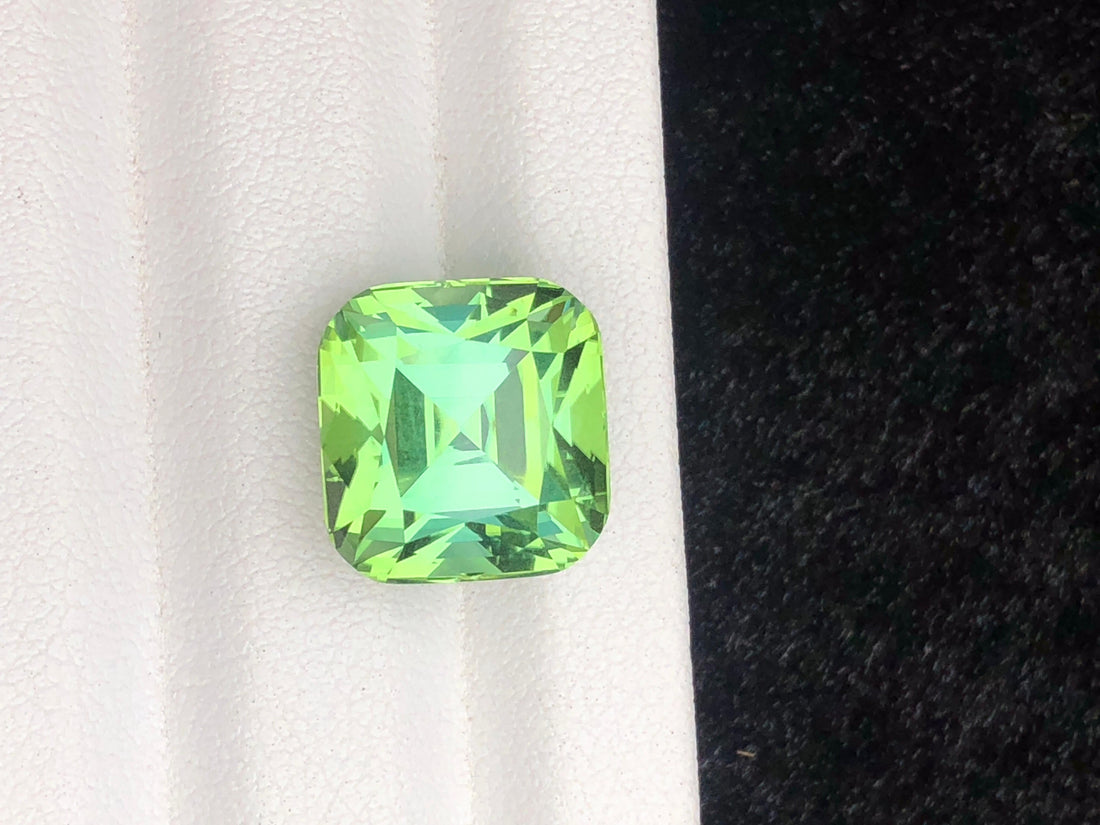
Fluorescence in Tourmalines: An Overlooked Dimension of Beauty and Identification
Share
While fluorescence is a well-documented and celebrated phenomenon in gemstones such as ruby, spinel, and diamond, its presence in tourmalines remains underappreciated in both gemological literature and market narratives. Yet, as the Lisbon Gem Exchange continues to handle a wide range of tourmalines from Afghanistan — one of the world’s most geologically rich sources — our team has increasingly encountered fluorescent behaviour in certain high-quality specimens. This article explores the scientific basis, gemological relevance, and diagnostic potential of fluorescence in tourmalines, with a focus on the elbaite variety from Afghanistan.
What Is Fluorescence in Gemstones?
Fluorescence refers to the emission of visible light by a substance when exposed to ultraviolet (UV) radiation. In gemstones, this is often triggered by long-wave (365 nm) or short-wave (254 nm) UV light. The effect depends on the atomic structure of the crystal and the presence of trace elements or activators, such as chromium, manganese, or uranium. While many associate fluorescence with diamonds or rubies, its role in other coloured stones — including tourmalines — is less studied, though equally intriguing.
Tourmaline Chemistry and the Role of Manganese
Tourmaline is not a single mineral but a complex group of borosilicates with variable composition. The most gemologically significant member is elbaite, which forms in a wide range of vivid colours due to the presence of chromophores like iron (Fe²⁺/Fe³⁺), manganese (Mn²⁺/Mn³⁺), chromium (Cr³⁺), and vanadium (V³⁺).
Fluorescence in tourmalines is typically linked to manganese, especially in its trivalent state (Mn³⁺). Pink, red, and some orange tourmalines often contain higher concentrations of Mn³⁺, which can act as a luminescent centre when excited by UV radiation. These effects are suppressed by iron, which acts as a quencher. This makes low-iron, high-manganese tourmalines — like many of those mined in the Nuristan and Kunar provinces of Afghanistan — the most likely to fluoresce.
What Colours of Fluorescence Are Observed?
In our laboratory observations at Lisbon Gem Exchange, tourmalines that fluoresce typically emit a pink, orange, or sometimes coral glow under long-wave UV. This fluorescence is often subtle, and not always uniform across the crystal — zoning may occur, highlighting areas of differential Mn distribution or varying oxidation states.
Notably:
Pink tourmalines (rubellites) with high Mn³⁺ and low Fe content may display a weak to moderate red fluorescence.
Mint green tourmalines from low-iron zones sometimes show a soft apricot to peach glow under UV.
Dark, iron-rich schorls and dravites generally do not fluoresce, due to quenching.
While the fluorescence is often not strong enough to be seen in ambient light, it becomes a useful diagnostic tool under controlled gemological conditions.
Diagnostic and Identification Value
Fluorescence can be used as an auxiliary method to help determine:
Geographic origin: Fluorescent response may point toward marble-hosted pegmatitic tourmalines from regions like Nuristan, in contrast with non-fluorescent tourmalines from iron-rich granite-hosted deposits (e.g. Mozambique or Brazil).
Elemental composition: Presence and strength of fluorescence suggest low Fe and high Mn³⁺ — valuable clues when spectroscopy is unavailable.
Authenticity and treatment detection: Some heat-treated or irradiated stones may lose their fluorescence or display altered UV responses, assisting in identifying enhancements.
Commercial Relevance and Market Perception
In today’s gemstone market, fluorescence remains an underleveraged quality factor for tourmalines. Unlike diamonds, where blue fluorescence can negatively impact value depending on the grading lab, or rubies, where red fluorescence enhances saturation and therefore price, the commercial implication for tourmaline fluorescence is less standardised.
However, this is changing. Among collectors and connoisseurs, UV-reactive stones are increasingly seen as rarities, especially when accompanied by strong provenance and visual beauty under natural and UV light. Lisbon Gem Exchange has begun including fluorescence notes in its documentation for select Afghani tourmalines, offering a richer gemological profile to potential buyers.
A Subtle Signal Worth Investigating
Fluorescence in tourmalines is not merely a visual curiosity — it is a window into the complex mineral chemistry and geologic history of these stones. While not all tourmalines fluoresce, those that do often carry within them a unique combination of purity, manganese activation, and low-iron genesis. As gemological research advances and market appreciation grows, fluorescence may well become a recognised factor in both the scientific and commercial valuation of fine tourmalines — particularly those from the unique and storied mines of Afghanistan.



